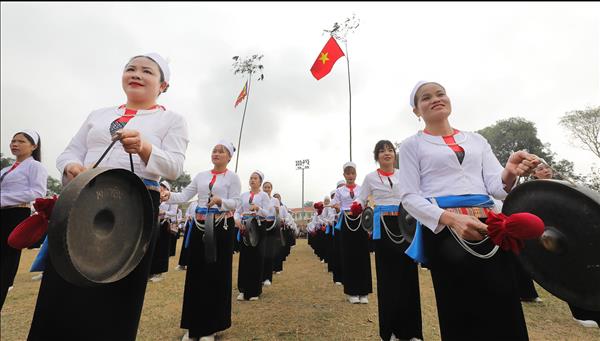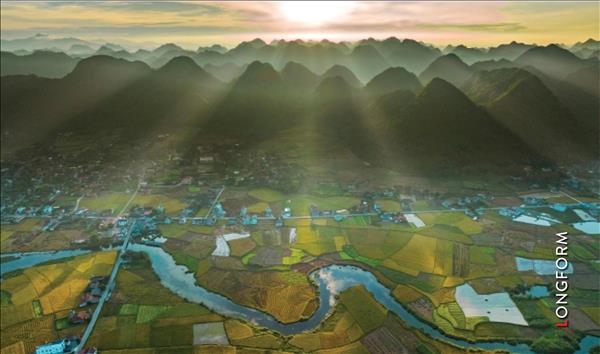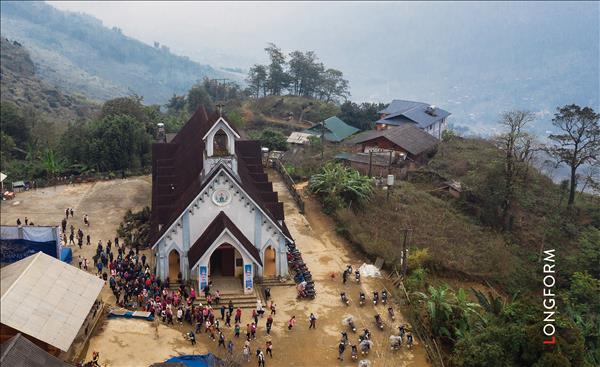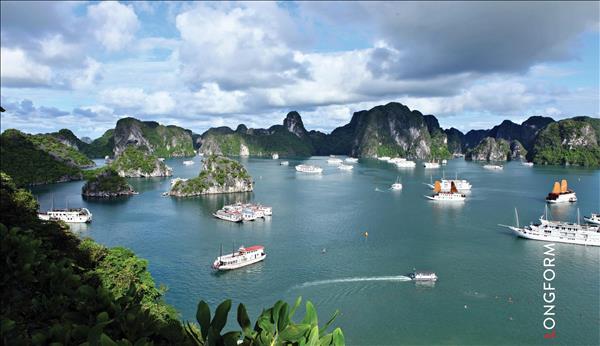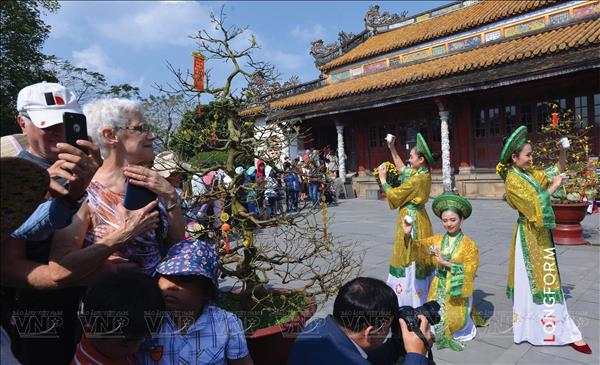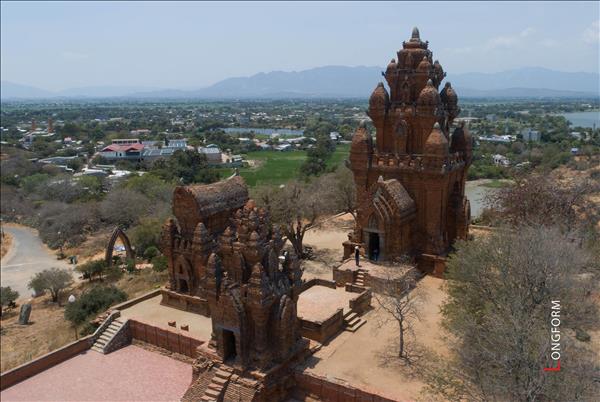The Sacred Land
Long An is considered “the sacred land” with kind-hearted and hospitable people. For this reason, visiting Long An one will have a chance to learn intriguing stories which have existed since the time the locals started reclaiming new land some 200 years ago and the fight against foreign invaders since the 19th century.
Endowed by nature with a system of crisscrossing canals and favourable natural conditions, the province has many advantages to develop tourism. From the centre of Tan An, the “capital” of Vinh Long province, tourists drive along Highway 62 to Dong Thap Muoi (the Plain of Reeds) which is famous for cultural features of the watery area.
Taking full advantage of its strength, the province’s authorities have created different tourism products, such as eco-tourism and tours to discover unique cultural values in the daily life of locals in the area. At present, the province has built many eco-tourism destinations, namely Tan Lap Floating Village (Moc Hoa district), Lang Sen Wetland Reserve (Tan Hung district) and Dong Thap Muoi Ecotourism Resort (in the districts of Moc Hoa, Vinh Hung, Thanh Hoa and Tan Thanh).
Visiting Dong Thap Muoi, tourists will have a chance to discover the beautiful landscape of immense cajuput forests and lotus fields and enjoy delicious rural dishes, such as common sesban flower sour soup, lotus root salad and grilled snakehead with chilly salt. The two districts of Can Giuoc and Can Duoc are famous for sausages and Com ngo (a type of cake made of sticky rice, wheat flour, eggs, cooking oil and Malt syrup).
Long An is also known as the land of historical and cultural relics, such as Binh Tu archaeological vestige in Duc Hoa Ha commune, Duc Hoa district. The place still preserves imprints of the unique Oc Eo Culture which flourished in the Mekong River Delta and the Southeast between the 1st and 7th centuries. In 1989, it was recognised by the government as a national historical and cultural relic. Binh Ta is not only a favourite destination of both archaeologists and those who have a passion for learning about Oc Eo Culture, but also a unique cultural tourism address for tourists.
Long An & High-Tech Agricultural Areas
Long An has a suitable geological position and natural conditions for growing agricultural products of high productivity, such as rice (ranked 4th in the Mekong Delta) and dragon fruit (ranked 2nd after Binh Thuan province).
In recent years, Long An province has promoted the application of high-technology to agricultural production. Therefore, many high-tech agricultural models have developed comprehensively in the direction of commodity production which is competitive, environmentally friendly and adaptable to climate change, meeting the needs of industrialisation and modernisation of agriculture, rural areas and investment attraction.
Long An is located on the two banks of the Vam Co river and is endowed by nature with favourable conditions so the land is famous in the South for specialties, such as Cho Dao rice, Long Tri watermelon, Ben Luc pineapple, Chau Thanh dragon fruit, Duc Hoa peanuts and Thu Thua sugarcane. Long An promotes the application of high-tech achievements to agriculture, forming many areas specialising in the cultivation of crops with high quality and economic value. These crops help increase income for farmers. The province has planned to invest 1,300 billion dong (57 million US dollars) in high-tech agricultural areas for the 2016-2020 period.
The province’s policy has proven efficient over the years. Along the two sides of the road from Tan An city to Chau Thanh district are farms of dragon fruit trees laden with red fruit.
According to Vo Van Van, Head of Agriculture and Rural Development of Chau Thanh district, Chau Thanh is the largest dragon fruit growing area in the province, accounting for 90% of the total cultivated land. It is expected to continue expansion in the future. At present, the district is making surveys to find an area of 300ha to grow dragon fruit trees meeting VietGAP standards by the end of 2017 and another area of 2,00ha by the end of 2020.
Along with dragon fruit, rice is also a key crop for export. The area used for growing rice has expanded rapidly over the years. During the harvest, visiting the districts of Tan Hung, Moc Hoa, Vinh Hung, Thanh Hoa and Kien Tuong in the area of Dong Thap Muoi, one will be surprised by the immense golden rice fields. The whole province now has a total area of 40,000ha used for growing rice for export, including 1,350ha of high-tech rice which is expected to increase to 20,000ha in 2020.
If Chau Thanh and Dong Thap Muoi are famous for dragon fruit and rice, the districts of Can Giuoc and Can Duoc are known as the vegetable growing areas in the province. Dang Duy Dung, Director of Phuoc Thinh Clean Vegetable Cooperative in Phuoc Hau commune in Can Giuoc said that the soil in the area may be cultivated for more than 20 years and need not require the use of any fertilisers. All vegetable products meet hygiene requirements and have a delicious taste.
At present, there are many clean and safe vegetable cooperatives in Can Giuoc and Can Duoc, supplying vegetables to markets in the southern provinces. On average, these cooperatives give farmers more than 37 million dong/ 1.000m2/2 crops.
According to Le Van Hoang, Director of Long An Department of Agriculture and Rural Development, Long An will soon carry out the planning, promote research and application of science and technology, restructure production, ensure investment, production process and promote production - consumption link with the value chain.
| Long An is located at the gateway of Ho Chi Minh City - the country’s largest economic centre. It has a seaport at the mouth of the Soai Rap river to the east, 15km from the East Sea, and border gates to Cambodia to the west, a favourable location for attracting investment. |
Endowed by nature with a system of crisscrossing canals and favourable natural conditions, the province has many advantages to develop tourism. From the centre of Tan An, the “capital” of Vinh Long province, tourists drive along Highway 62 to Dong Thap Muoi (the Plain of Reeds) which is famous for cultural features of the watery area.
|
The centre of Tan An city. Photo: Nguyen Luan/VNP 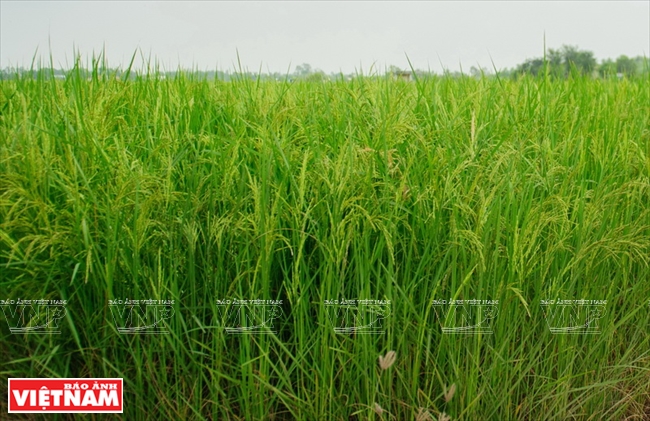 Rice is the main agricultural product of Long An province. Photo: Nguyen Luan/VNP 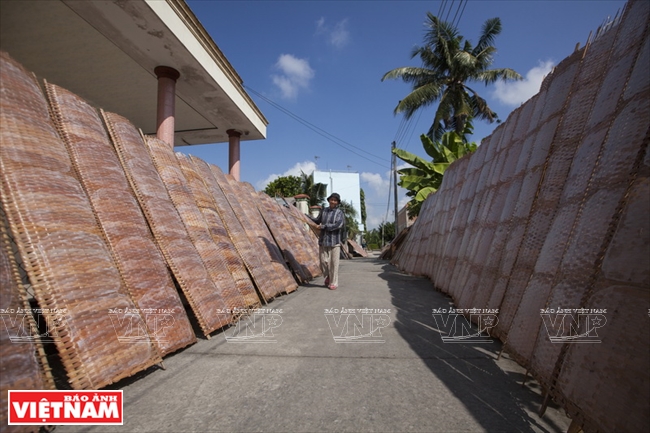 The province also has many traditional trade villages such as Nhon Hoa rice paper making village. Photo: Thong Hai/VNP 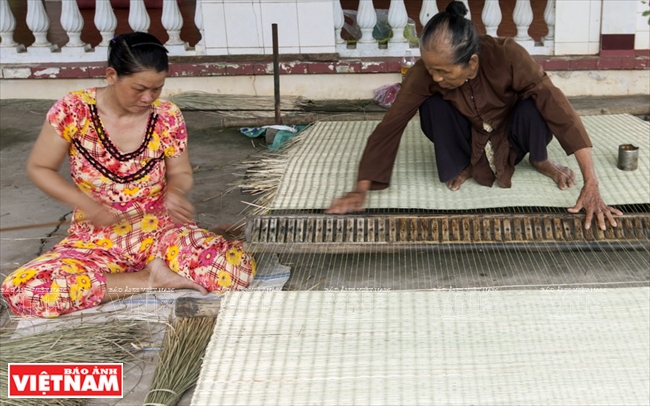 The mat making village in Can Duoc district. Photo: Le Minh/VNP 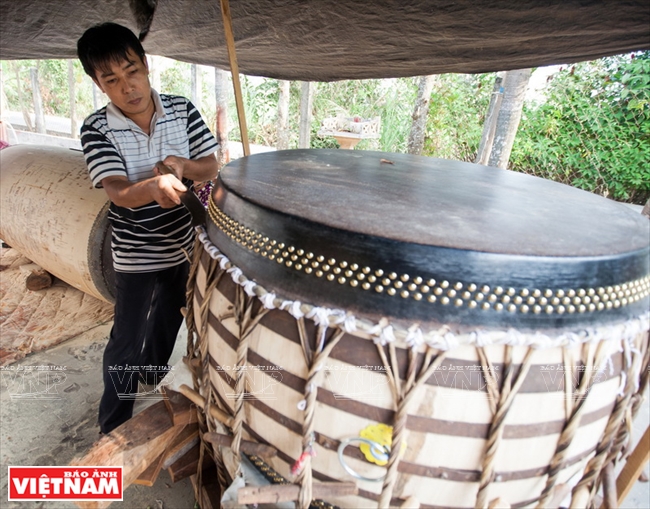 The drum making village of Binh An in Tan Tru district. Photo: Le Minh/VNP Chau Thanh dragon fruit is a speciality of Long An. Photo: Nguyen Luan/VNP Sausage is a specialty in Can Duoc. Photo: Nguyen Luan/VNP Phuc Long is one of the 28 industrial parks in Long An. Photo: Nguyen Luan/VNP Manufacturing steel for export at an industrial zone in Long An. Photo: Nguyen Luan/VNP Tourists on the tour to visit Dong Thap Muoi ecotourism complex. Photo: Nguyen Luan/VNP Dong Thap Muoi is inscribed with unique cultures of Southern Vietnam. Photo: Nguyen Luan/VNP |
Taking full advantage of its strength, the province’s authorities have created different tourism products, such as eco-tourism and tours to discover unique cultural values in the daily life of locals in the area. At present, the province has built many eco-tourism destinations, namely Tan Lap Floating Village (Moc Hoa district), Lang Sen Wetland Reserve (Tan Hung district) and Dong Thap Muoi Ecotourism Resort (in the districts of Moc Hoa, Vinh Hung, Thanh Hoa and Tan Thanh).
| Long an province has now 28 industrial parks with investment from 30 countries and territories, such as the UK, Taiwan, Japan, Singapore, South Korea and the United States. |
Visiting Dong Thap Muoi, tourists will have a chance to discover the beautiful landscape of immense cajuput forests and lotus fields and enjoy delicious rural dishes, such as common sesban flower sour soup, lotus root salad and grilled snakehead with chilly salt. The two districts of Can Giuoc and Can Duoc are famous for sausages and Com ngo (a type of cake made of sticky rice, wheat flour, eggs, cooking oil and Malt syrup).
Long An is also known as the land of historical and cultural relics, such as Binh Tu archaeological vestige in Duc Hoa Ha commune, Duc Hoa district. The place still preserves imprints of the unique Oc Eo Culture which flourished in the Mekong River Delta and the Southeast between the 1st and 7th centuries. In 1989, it was recognised by the government as a national historical and cultural relic. Binh Ta is not only a favourite destination of both archaeologists and those who have a passion for learning about Oc Eo Culture, but also a unique cultural tourism address for tourists.
Long An & High-Tech Agricultural Areas
Long An has a suitable geological position and natural conditions for growing agricultural products of high productivity, such as rice (ranked 4th in the Mekong Delta) and dragon fruit (ranked 2nd after Binh Thuan province).
In recent years, Long An province has promoted the application of high-technology to agricultural production. Therefore, many high-tech agricultural models have developed comprehensively in the direction of commodity production which is competitive, environmentally friendly and adaptable to climate change, meeting the needs of industrialisation and modernisation of agriculture, rural areas and investment attraction.
Long An is located on the two banks of the Vam Co river and is endowed by nature with favourable conditions so the land is famous in the South for specialties, such as Cho Dao rice, Long Tri watermelon, Ben Luc pineapple, Chau Thanh dragon fruit, Duc Hoa peanuts and Thu Thua sugarcane. Long An promotes the application of high-tech achievements to agriculture, forming many areas specialising in the cultivation of crops with high quality and economic value. These crops help increase income for farmers. The province has planned to invest 1,300 billion dong (57 million US dollars) in high-tech agricultural areas for the 2016-2020 period.
|
A dragon fruit farm in Chau Thanh which meets VietGap standards. Photo: Nguyen Luan/VNP Dragon fruit is a major export product of Long An. Photo: Nguyen Luan/VNP Growing safe vegetables in net houses in Can Giuoc. Photo: Nguyen Luan/VNP Safe vegetable in Can Giuoc district are suppplied to provinces in southern Vietnam. Photo: Nguyen Luan/VNP 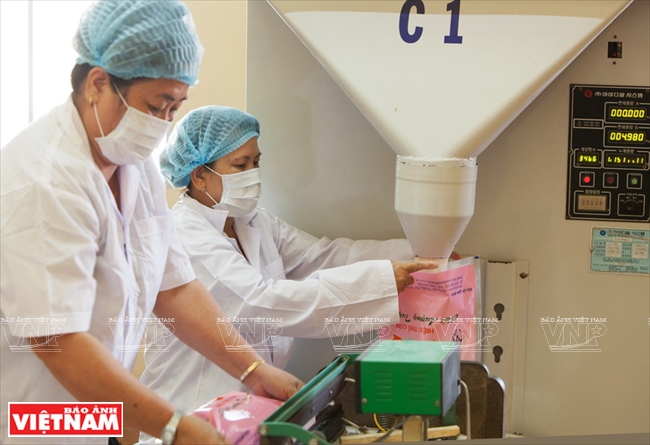 Packing Cho Gao rice at MECOFOOD Company. Photo: Nguyen Luan/VNP |
The province’s policy has proven efficient over the years. Along the two sides of the road from Tan An city to Chau Thanh district are farms of dragon fruit trees laden with red fruit.
According to Vo Van Van, Head of Agriculture and Rural Development of Chau Thanh district, Chau Thanh is the largest dragon fruit growing area in the province, accounting for 90% of the total cultivated land. It is expected to continue expansion in the future. At present, the district is making surveys to find an area of 300ha to grow dragon fruit trees meeting VietGAP standards by the end of 2017 and another area of 2,00ha by the end of 2020.
|
Long An province has been focusing on guiding the implementation of the program on breakthrough high-tech agricultural development with agricultural restructure with a focus on four plants and domestic animals, including rice, dragon fruit, vegetables and cows. Initially, the province has established specialised areas such as high quality rice in the Dong Thap Muoi area, dragon fruit in Chau Thanh district and vegetables in Can Giuoc. (Tran Van Can, Chairman of Long An Province’s People Committee) |
If Chau Thanh and Dong Thap Muoi are famous for dragon fruit and rice, the districts of Can Giuoc and Can Duoc are known as the vegetable growing areas in the province. Dang Duy Dung, Director of Phuoc Thinh Clean Vegetable Cooperative in Phuoc Hau commune in Can Giuoc said that the soil in the area may be cultivated for more than 20 years and need not require the use of any fertilisers. All vegetable products meet hygiene requirements and have a delicious taste.
At present, there are many clean and safe vegetable cooperatives in Can Giuoc and Can Duoc, supplying vegetables to markets in the southern provinces. On average, these cooperatives give farmers more than 37 million dong/ 1.000m2/2 crops.
According to Le Van Hoang, Director of Long An Department of Agriculture and Rural Development, Long An will soon carry out the planning, promote research and application of science and technology, restructure production, ensure investment, production process and promote production - consumption link with the value chain.
Story: Nguyen Vu Thanh Dat - Photos: Nguyen Luan & VNP's files

